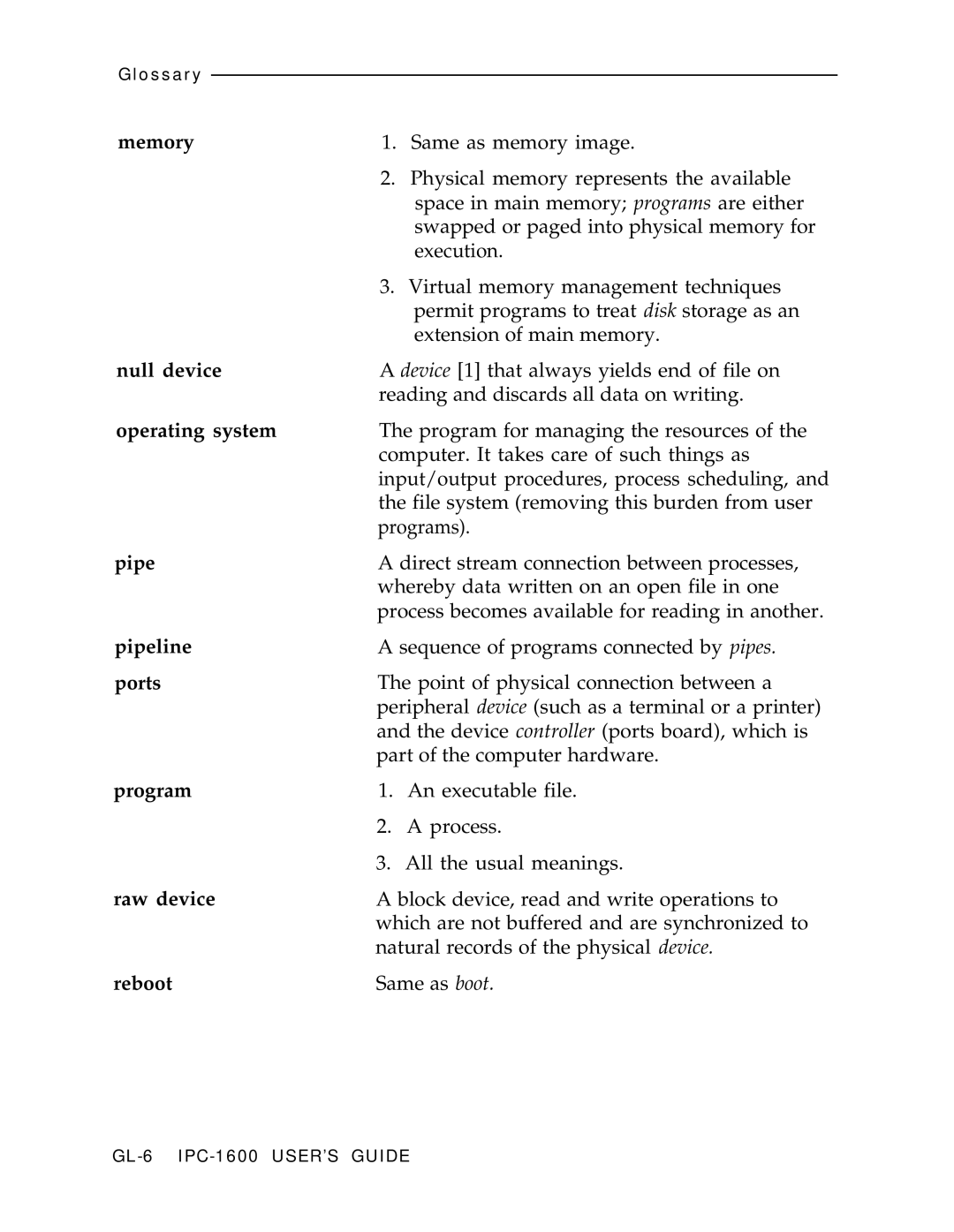Glossary
memory | 1. | Same as memory image. |
| 2. Physical memory represents the available | |
|
| space in main memory; programs are either |
|
| swapped or paged into physical memory for |
|
| execution. |
| 3. Virtual memory management techniques | |
|
| permit programs to treat disk storage as an |
|
| extension of main memory. |
null device | A device [1] that always yields end of file on | |
| reading and discards all data on writing. | |
operating system | The program for managing the resources of the | |
| computer. It takes care of such things as | |
| input/output procedures, process scheduling, and | |
| the file system (removing this burden from user | |
| programs). | |
pipe | A direct stream connection between processes, | |
| whereby data written on an open file in one | |
| process becomes available for reading in another. | |
pipeline | A sequence of programs connected by pipes. | |
ports | The point of physical connection between a | |
| peripheral device (such as a terminal or a printer) | |
| and the device controller (ports board), which is | |
| part of the computer hardware. | |
program | 1. | An executable file. |
| 2. | A process. |
| 3. All the usual meanings. | |
raw device | A block device, read and write operations to | |
| which are not buffered and are synchronized to | |
| natural records of the physical device. | |
reboot | Same as boot. | |
